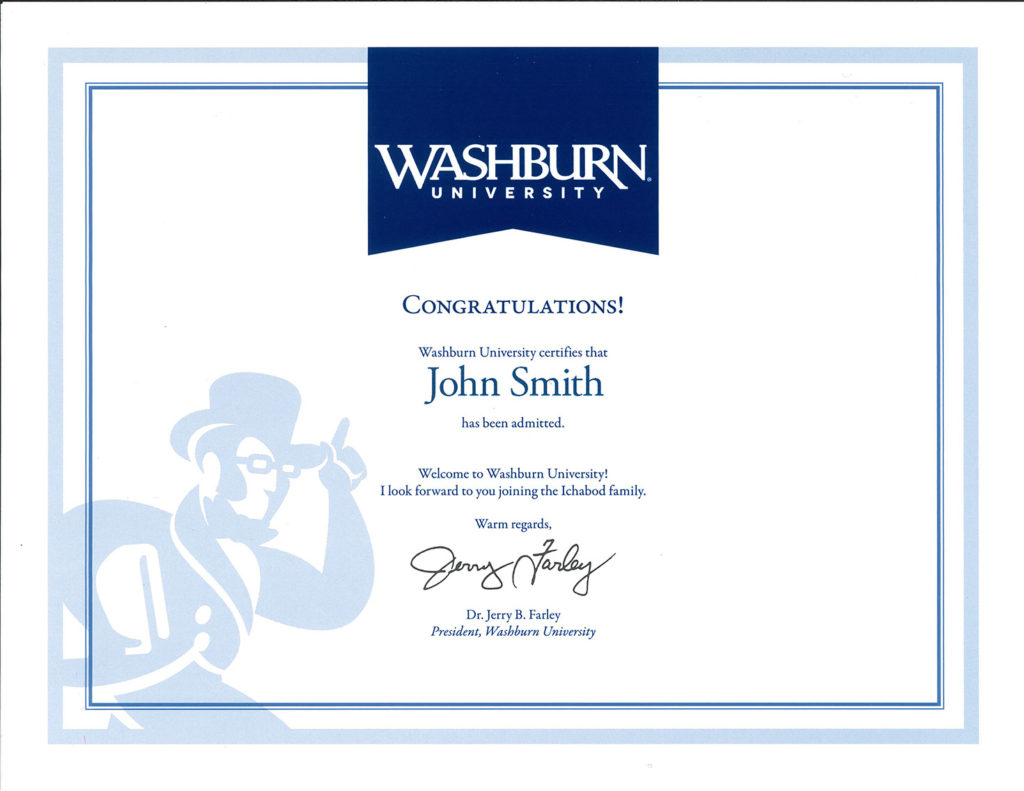Every year, educational institutions such as universities and prep schools mail out thousands of pamphlets to prospective students. The brochures tout their educational programs and extracurricular offerings, in hopes of leading students to apply to their campus… or for their alumni to donate funds. But do they work? Do they make students feel so excited about enrolling that they make your school their #1 pick? The answer is yes, promotional materials do work. And personalizing message and imagery with variable data printing, say some studies, can increase response rates by as much as 35%.
Personalization = Response
Marketing experts have known for decades that the more often a message is personalized, the better the response. But marketers could not personalize a student’s entire registration experience until certain advances had been made in digital printing.

In this example of VDP, the image, student’s name, and degree are all variable.
For instance, the pamphlet sent to prospective students can feature the same design, but each may also have content relevant to their major (English, Physics, etc). Likewise, an athlete might receive a brochure that showcases college sports photos while an artist might receive a brochure that features imagery from the campus museum.
To make students feel more included, marketers can align imagery or content with an individual’s culture or background.

Personalized fundraising communications can even improve an alumni’s connection to their alma mater, generating more donations over the years.
Challenges with Variable Data
According to Washburn University’s Assistant Director of Marketing Travis Perry, designing data-compliant materials or printing the pieces is not their greatest challenge. Their largest stumbling block lies in maintaining an accurate database.
“It takes coordination, but variable data printing keeps us from sending the same materials to the same students at the same time,” explains Perry. “Yet it’s also imperative to have a printing partner that’s adept at VDP, as we have with Mainline Printing.”

Perry also reiterates the importance of having clean data on the back end. “It doesn’t matter how good your template is,” he explains, “poorly formatted variable data can ruin even the best design.”
Amy Bladow, Sr. Project Specialist at the University of Notre Dame, concurs with Perry. “Without an accurate database, your best efforts can backfire,” she explains. “There is nothing worse than accidentally personalizing a direct mail piece with someone else’s name or info. In fact, it’s worse than sending a generic piece.”
Provided that the database is accurate, variable data can be a boon for marketers. Digital presses don’t have a minimum run. So prior to sending out a bulk mailing, marketers can mail out a short-run test to gauge which colors, messaging, or graphics generate the best response. Based on the results, marketers can then update the bulk mail design accordingly.
The result? If properly utilized by educational marketers, variable data printing can foster in students a greater sense of belonging and a lifetime of school spirit.


